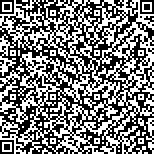黄欢,张逸仙,郑谋炜,等.运动训练对大鼠脑梗死周边皮质脑红蛋白表达的影响及机制探讨[J].中华物理医学与康复杂志,2021,43(7):577-581
扫码阅读全文

|
| 运动训练对大鼠脑梗死周边皮质脑红蛋白表达的影响及机制探讨 |
|
| |
| DOI:10.3760/cma.j.issn.0254-1424.2021.07.001 |
| 中文关键词: 脑梗死 运动训练 脑红蛋白 氧化应激 轴突再生 |
| 英文关键词: Cerebral infarction Exercise training Neuroglobin Oxidative stress Axon regeneration |
| 基金项目:国家自然科学基金项目(81772452),福建省自然科学基金项目(2018J01309) |
|
| 摘要点击次数: 6427 |
| 全文下载次数: 7005 |
| 中文摘要: |
| 目的 观察运动训练对大鼠脑梗死周边皮质脑红蛋白(Ngb)表达、氧化应激水平以及神经轴突再生的影响,初步探讨运动训练促进脑梗死后神经功能恢复的相关机制。 方法 采用随机数字表法将36只雄性SD大鼠分为假手术组、模型组及观察组,每组12只。模型组及观察组大鼠采用改良Longa线栓法制成大脑中动脉闭塞(MCAO)脑梗死模型,假手术组大鼠进行同样手术操作,但术中不插入线栓堵塞大脑中动脉。观察组大鼠于术后24 h采用跑台仪进行运动训练,每天训练1次,其余2组大鼠亦同期置于跑台仪上但不进行运动训练。于术后第3,7,14天时采用修订版神经功能缺损评分(mNSS)评定各组大鼠神经功能;于末次神经功能评定结束后断头取脑,检测各组大鼠脑梗死周边皮质Ngb、氧化应激相关指标[如超氧化物歧化酶(SOD)、一氧化氮(NO)、丙二醛(MDA)]及神经轴突再生相关指标[神经丝蛋白-200(NF-200)]表达情况。 结果 术后第3天时观察组mNSS评分与模型组间差异无统计学意义(P>0.05);术后第7,14天时观察组mNSS评分[分别为(6.83±1.03)分和(5.08±0.79)分]均明显优于模型组(P<0.05)。模型组Ngb表达水平高于假手术组(P<0.05),观察组Ngb表达水平亦显著高于模型组(P<0.05)。观察组SOD表达水平显著高于模型组(P<0.05),NO、MDA表达水平明显低于模型组(P<0.05)。 结论 运动训练有利于脑梗死大鼠神经功能恢复,其作用机制可能与上调脑梗死周边皮质Ngb表达、减轻氧化应激反应以及促进神经轴突再生有关。 |
| 英文摘要: |
| Objective To study the effect of rehabilitation training on the expression of neuroglobin (Ngb), oxidative stress and axon regeneration in the cortex and explore possible mechanisms of functional recovery after cerebral infarction. Methods Thirty-six male Sprague-Dawley rats were randomly divided into a sham operation group, a model group and a rehabilitation group. Cerebral infarction was modelled in the model and rehabilitation groups using Longa′s middle cerebral artery occlusion (MCAO) technique. The sham operation group received the same procedure except that no thread was inserted to block the middle cerebral artery. The rats in the rehabilitation group began treadmill training 24h after the operation, while the other two groups were left on the treadmill without training. On the 3rd, 7th and 14th days after the operation, all of the rats′ neurological functioning was assessed using modified neurological severity scores (mNSSs). After the last mNSS test, all of the rats were sacrificed and peri-infarct brain tissue was resected to detect the expression of Ngb and oxidative stress indicators including superoxide dismutase (SOD), nitric oxide and malondialdehyde (MDA), as well as neurofilament-200 (NF-200) indicating axon regeneration. Results On the 3rd day after the surgery there was no significant difference between the average mNSS scores of the rehabilitation and model groups. On the 7th and 14th day the average mNSS score of the rehabilitation group was significantly better than that of the model group. The average expression of Ngb in the model group was significantly higher than in the sham operation group. After the intervention, the average expression of SOD in the rehabilitation group was significantly higher than in the model group, while NO and MDA expression were significantly lower. After the intervention the average expression of NF-200 in the rehabilitation group was also significantly higher than in the model group. Conclusions Rehabilitation training benefits the recovery of neurological function after cerebral infarction, at least in rats. The mechanism may be related to the upregulation of Ngb, alleviation of oxidative stress and enhancement of axonal regeneration in the peri-infarct cortex. |
|
查看全文
查看/发表评论 下载PDF阅读器 |
| 关闭 |